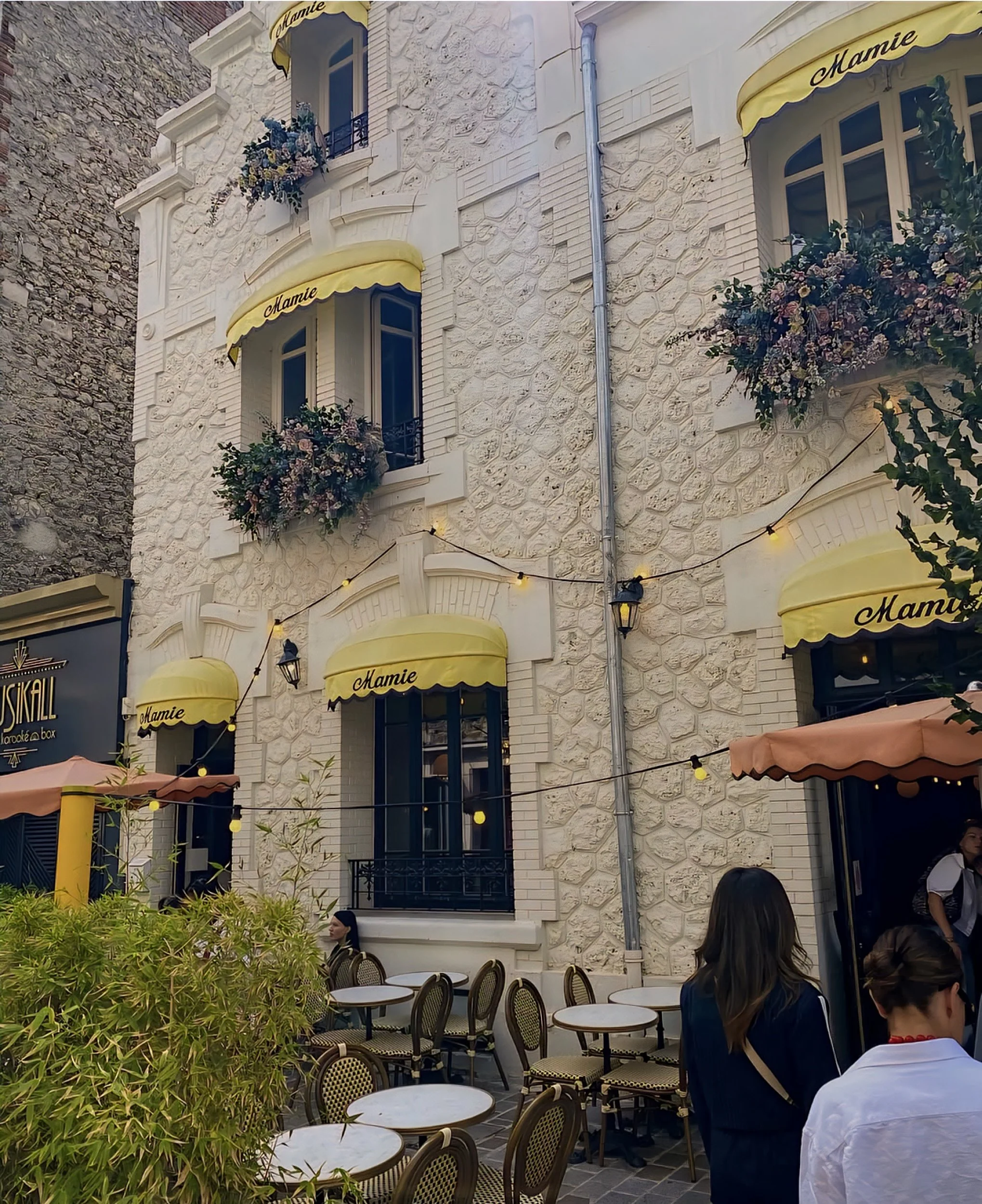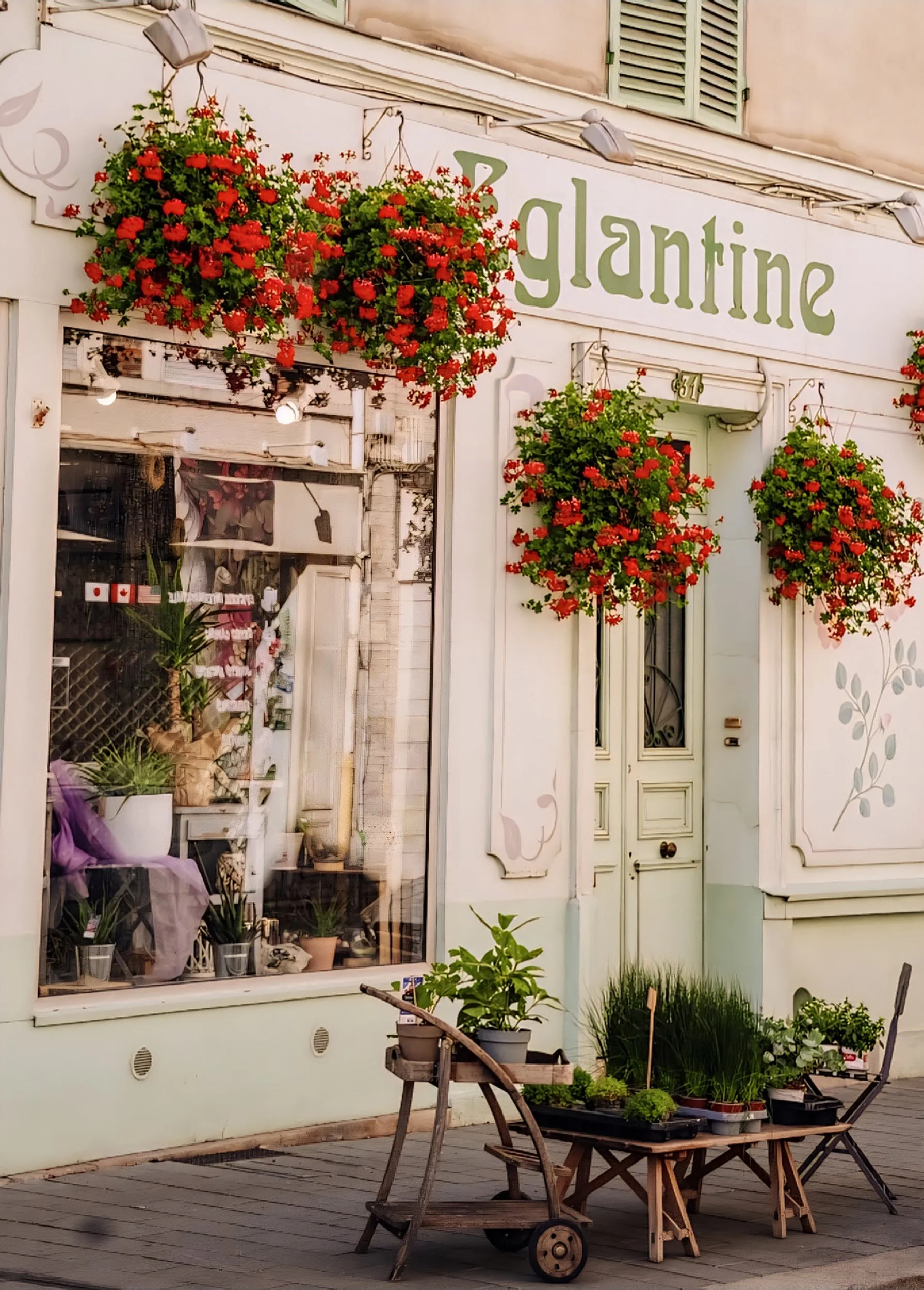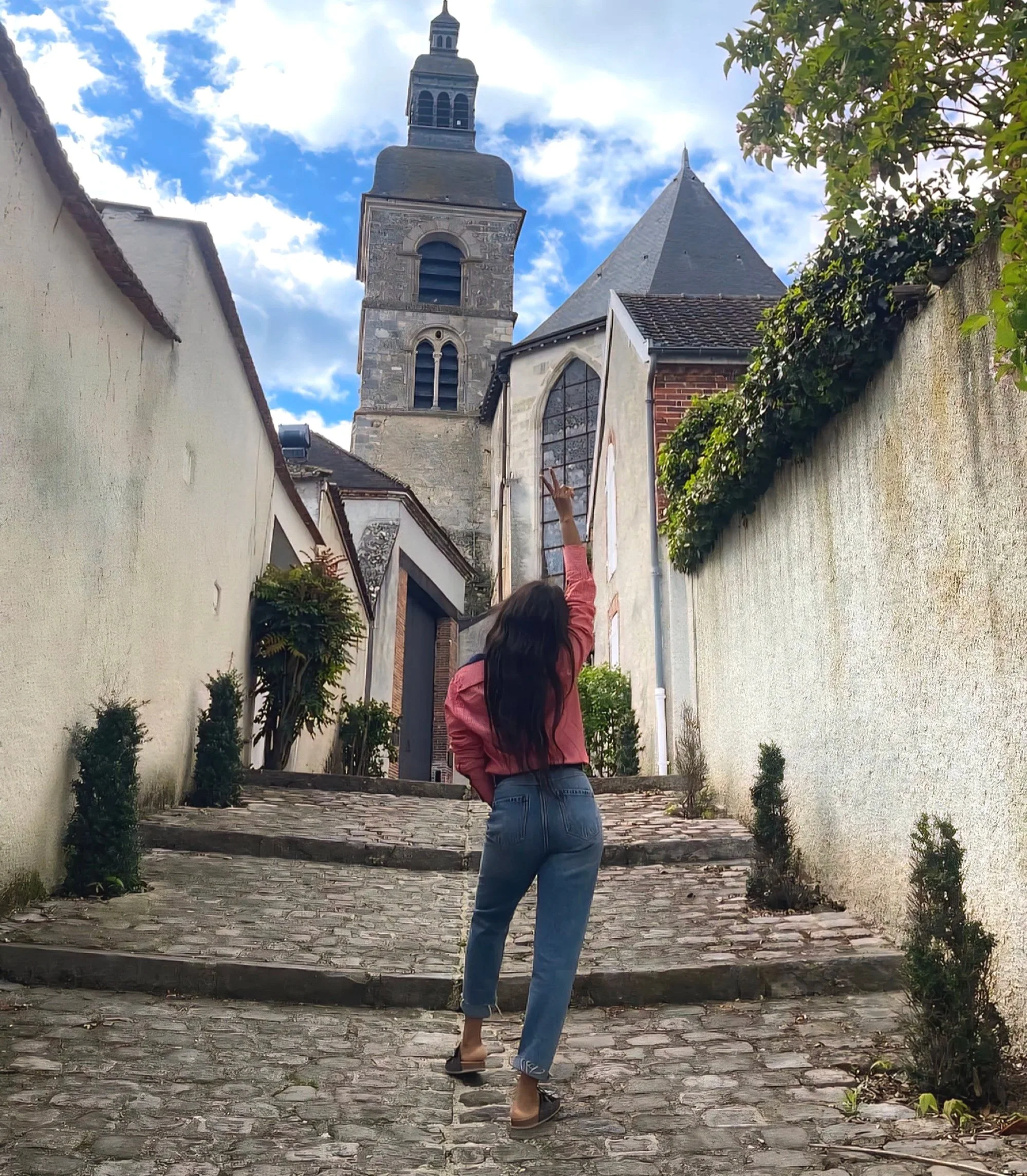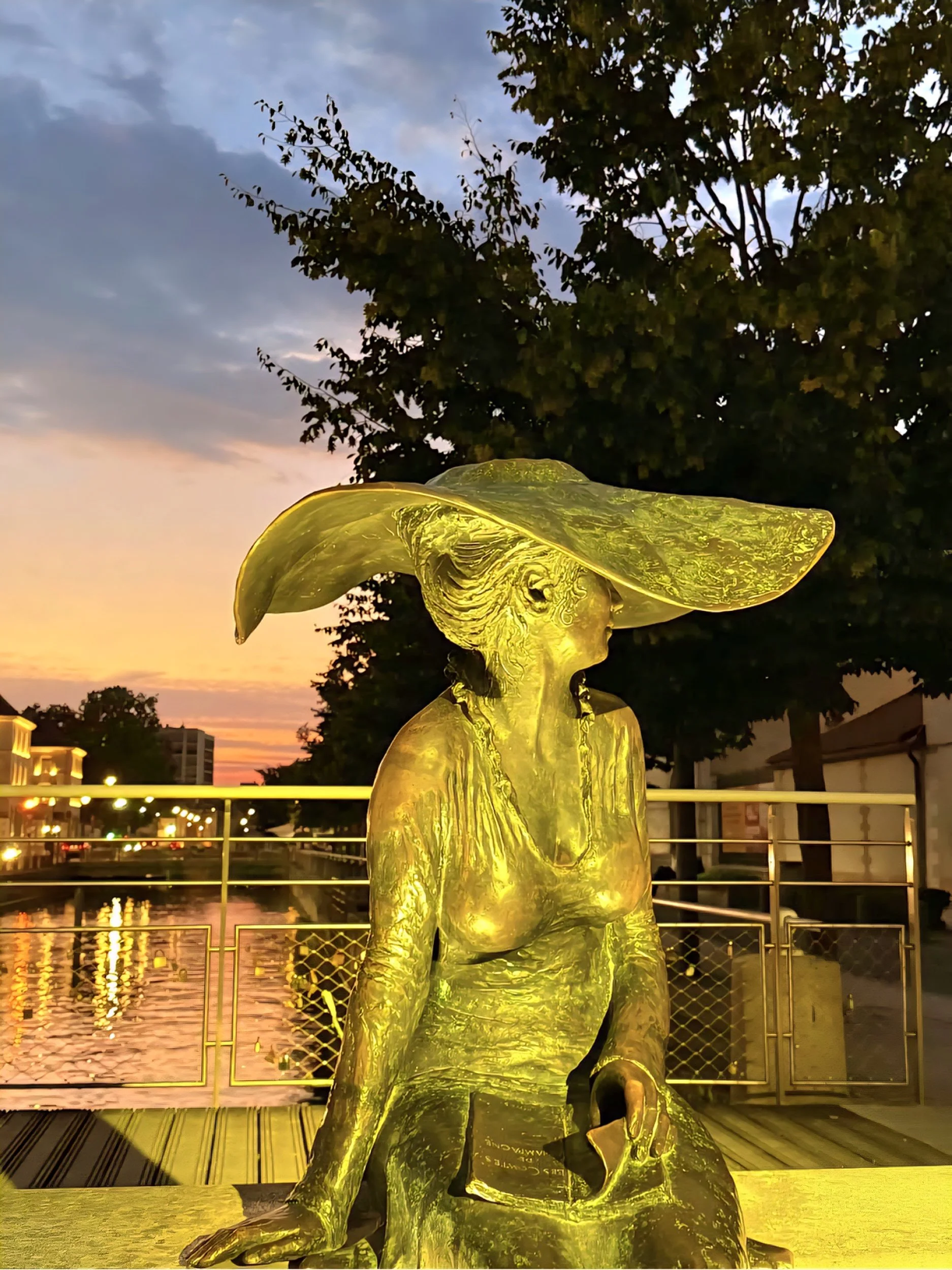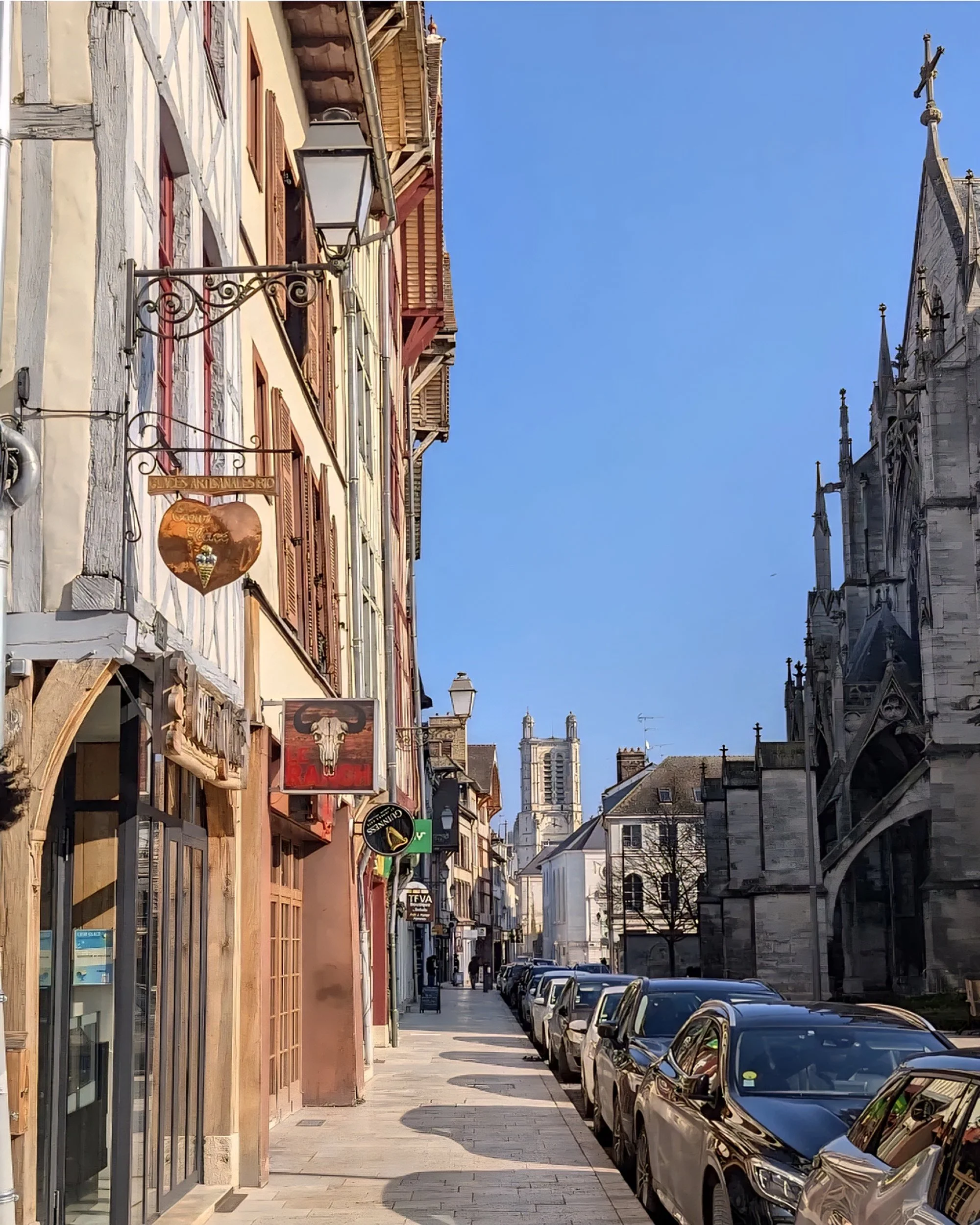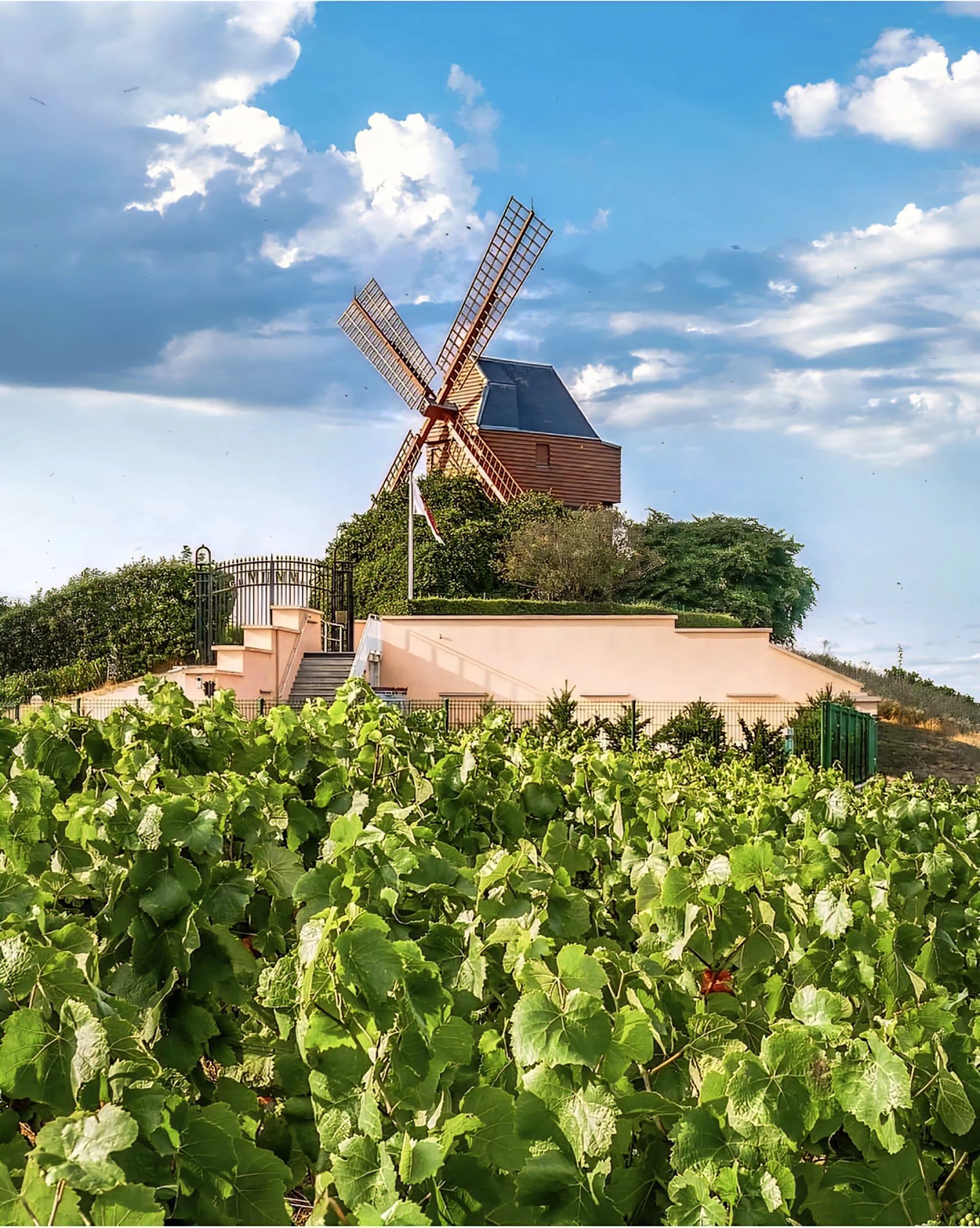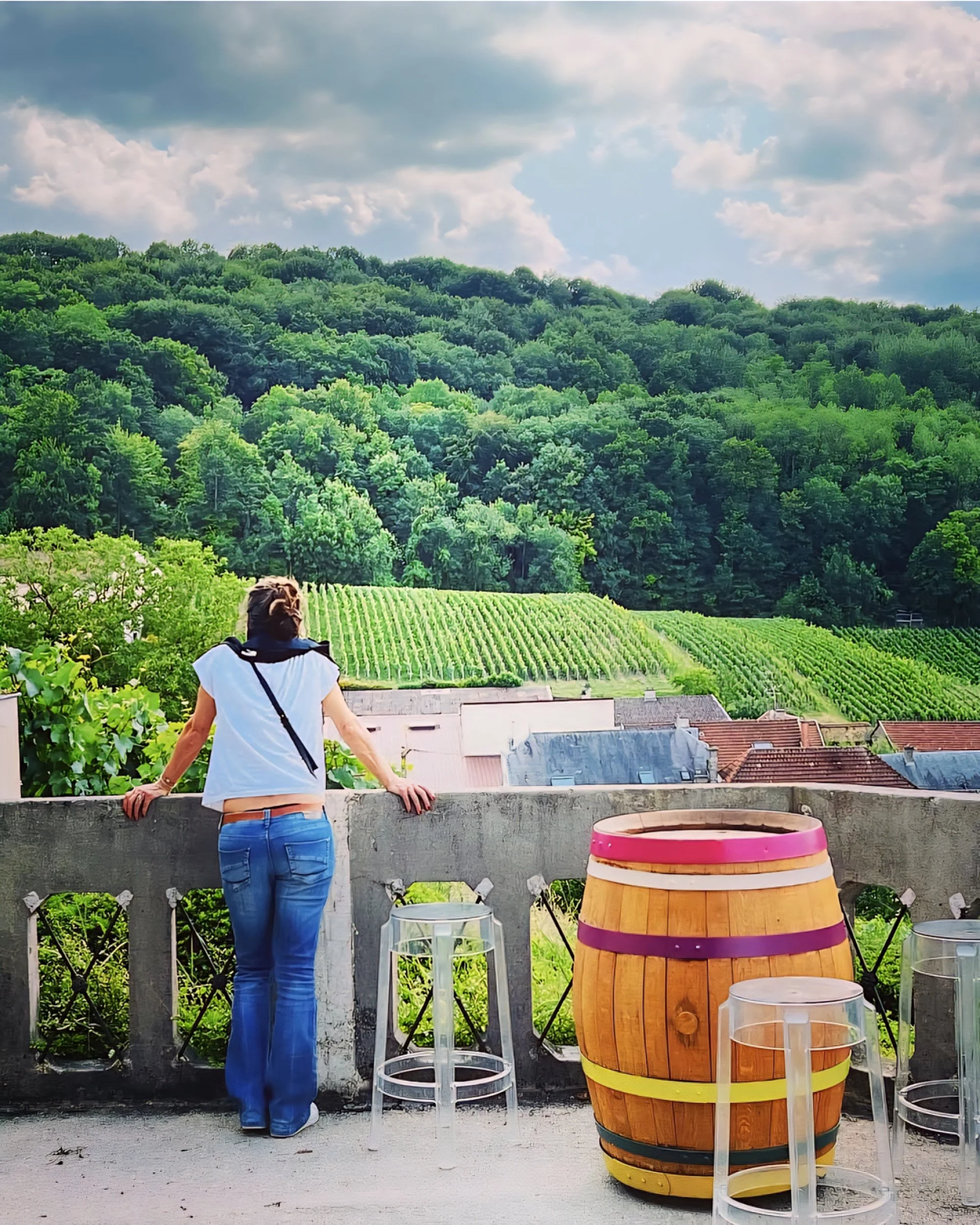Champagne, France Without a Car: A Cozy Solo Travel Guide
Peaceful towns, vineyard walks, and cozy corners… all without needing a car
The Champagne region is just 45 minutes from Paris by train, but it feels like you’ve swapped city streets for open skies and endless vines. Yes, this is where France’s famous sparkling wine comes from . but it’s also a place of walkable towns, café terraces, weekly markets, and vineyard views that look like they’ve been painted in layers of green and gold.
You don’t need a car to enjoy it. Fast trains will get you to Reims or Épernay, and from there it’s easy to hop on a short bus, taxi, or even an e‑bike to reach smaller villages. That means you can base yourself in one spot, unpack once, and spend your days in the best way possible: lingering over a cappuccino in a quiet square, browsing a family‑run wine shop, or taking a slow stroll between vine rows with nothing but birdsong for company.
Most visitors rush through on a quick tasting tour, but the real magic of Champagne shows up when you slow down. It’s finding a wine bar where the owner remembers your name after one visit. It’s watching locals play pétanque in the park at sunset. It’s realizing you have a medieval church entirely to yourself. That’s how I like to see it anyway - and I think you will too.
This guide will show you the most welcoming towns and villages in Champagne (all reachable without driving) plus the cafés, viewpoints, and little corners worth knowing about if you’re traveling solo.
Reims
Reims is where most people arrive when they first come to Champagne. The high‑speed train from Paris takes just 45 minutes, so it’s often seen as a quick day‑trip stop. But if you’re traveling solo and want to see more than the inside of a tasting room, it’s worth staying at least a night or two.
The station is right in the city center, so you can be in the old town within minutes of stepping off the train. Reims is easy to navigate on foot, with wide squares, cobbled side streets, and plenty of spots to pause for coffee or a pastry. Even though it’s the largest city in Champagne, it has a friendly, approachable feel that works well for solo travelers.
The cathedral is the obvious starting point, and it really is worth your time. This is where French kings were crowned, and the building is as impressive inside as it is from the outside. Go early, before the first tour buses, and you’ll have space to sit quietly and actually look up at the stained glass without feeling rushed.
From there, take the day at a relaxed pace. The Carnegie Library is a small but beautiful Art Deco building that’s free to visit, and it’s a nice way to step away from the main streets for a while. If the weather’s good, wander into Parc de la Patte d’Oie: a calm, tree‑filled park where locals eat lunch or read in the shade.
You can easily spend the afternoon exploring on foot. There are plenty of cafés where sitting alone feels comfortable - try L’Artisanale for a slow breakfast, or Café du Palais for a mid‑afternoon coffee surrounded by eclectic artwork and stained‑glass details. If you’d like a low‑key champagne experience in the city itself, Champagne Charles de Cazanove offers friendly tastings that don’t require an appointment.
Where to Stay in Reims
If you like the idea of waking up close to the main sights, La Demeure des Sacres is a charming B&B just steps from the cathedral. For something more traditional, Grand Hôtel des Templiers has character, comfort, and a peaceful courtyard. If you prefer simple and affordable, B&B Hôtel Reims Centre Gare is right next to the station and ideal if you plan on doing several day trips.
Reims is a great base for a car‑free trip. Regular trains connect you to Épernay in about 30 minutes, and you can reach smaller towns like Châlons‑en‑Champagne or Troyes without much planning. And between those day trips, you’ll find Reims easy to enjoy, whether you’re wandering between bookshops and bakeries or just sitting in the square with a glass of champagne, people‑watching.
🍷 Pair it with a quiet village read:
If peaceful places like Reims speak to you, you’ll love this list of small villages in Europe perfect for introverts: each one calm, beautiful, and ideal for people who prefer the sound of birds over crowds.
Épernay
Just 30 minutes by train from Reims, Épernay puts you right in the middle of Champagne country. It’s smaller and calmer than Reims, and you can feel it as soon as you step out of the station. The air is different here: fresher, with the faint scent of bread from the bakeries mixing with the earthy smell of the surrounding vineyards.
The Avenue de Champagne is the town’s famous showpiece. It’s lined with elegant champagne houses like Moët & Chandon, Perrier‑Jouët, and Pol Roger, many with beautifully kept gardens and ornate gates. You can certainly join a tour at one of the big names, but if you’re traveling solo, you might enjoy the town more if you wander away from the main strip. The side streets hide independent wine shops, small‑scale champagne houses, and cafés where you can linger over a glass without feeling rushed.
Épernay works well for slow days. Start at a local boulangerie for a fresh baguette or slice of quiche, then walk toward the edge of town. Within ten minutes you’ll find yourself among the vines, with views stretching over the Marne Valley. It’s an easy stroll, and you don’t need a car to get a taste of the countryside.
The town is also home to some excellent tasting rooms for smaller producers. Paul‑Etienne Saint Germain offers approachable, friendly tastings that don’t feel intimidating. If you’d like to pick up a bottle to enjoy later, Les Grains d’Argent wine shop has a great selection and knowledgeable staff who are happy to suggest bottles based on your taste.
Where to Stay in Épernay
If you want to be right on the Avenue de Champagne, Hôtel de Champagne offers simple comfort and a central location. For something a little more personal, La Villa Eugène is a boutique hotel in a 19th‑century mansion, with cozy rooms and a leafy garden. If you’re watching your budget, Ibis Épernay Centre Ville is clean, straightforward, and a short walk from both the station and main sights.
Épernay is also the best jumping‑off point for visiting Hautvillers, one of the prettiest villages in the region. It’s only a 10‑minute taxi or e‑bike ride away, and it’s worth the trip for its narrow lanes, wrought‑iron signs, and sweeping vineyard views.
Hautvillers
Hautvillers is just a short hop from Épernay: about 10 minutes by taxi, or an easy, scenic e‑bike ride along quiet vineyard roads. You don’t need to plan much to get there, and that’s part of its charm. It’s best known as the home of Dom Pérignon, but this little hillside village has a lot more going for it than a famous name.
The main streets wind gently uphill, flanked by shuttered houses with window boxes spilling flowers in summer. Overhead, wrought‑iron signs hang above shop doors - each one a miniature piece of art showing the trade inside: a barrel for the cooper, a bunch of grapes for the winemaker, a loaf for the baker.
It’s a compact village (you could walk every street in under an hour) but Hautvillers rewards those who take their time. Arrive in the morning and you might have the place almost to yourself. You’ll hear the gentle clink of coffee cups from a terrace, see a shopkeeper setting out jars of honey, and catch the slow hum of village life starting up for the day.
One of the best stops is Café de la Forge, where you can sit outside with a cappuccino or glass of champagne and watch life play out in the square. When you’re ready to wander, pop into a local champagne house (Champagne Marion‑Bosser is a friendly, family‑run option) or step inside a small shop selling regional produce like honey, biscuits, or pâté en croûte.
Don’t miss the short walk up to the viewpoint near the church. From here, the whole valley unfolds: neat rows of vines tumbling down towards Épernay, with the river winding through the middle. If you can, linger until the late afternoon when the light softens and the vineyards seem to glow.
Hautvillers is small and easy to navigate on foot. You’ll find friendly nods from locals if you greet them, but it’s also easy to find a quiet bench or a low stone wall where you can sit undisturbed and just take in the view. Pair your visit with a slow lunch in Épernay, and it’s a perfect half‑day trip.
Craving more vineyard walks?
If you’re into long, scenic strolls between the vines, this guide to vineyard hikes across Europe has a few soul-soothing routes to bookmark—Tuscany, Bordeaux, and beyond.
Troyes
Troyes sits just outside the heart of Champagne, about two hours from Reims by direct train, and it’s well worth the journey. While Reims and Épernay give you the bubbles, Troyes gives you a slower, more architectural kind of beauty: a maze of narrow cobbled lanes, pastel half‑timbered houses, and hidden courtyards that feel untouched by the passing centuries.
The old town is compact but endlessly walkable. Streets curve and narrow in ways that seem designed for wandering rather than efficiency, and every turn gives you another postcard‑worthy view. In summer, flowers spill from window boxes; in cooler months, the timber frames seem to soak up the golden afternoon light.
Unlike some picture‑perfect medieval towns, Troyes is still very much lived in. You’ll pass locals queuing at their favorite boulangerie, chatting in the market, or sitting outside a café with the weekend newspaper. That real‑life rhythm makes it an especially welcoming place for solo travelers - you’re part of the flow without feeling like you stand out.
Spend your morning exploring the quieter side streets like Ruelle des Chats, a narrow alley where the timbered buildings lean so close they almost touch. Drop into Librairie Les Passeurs de Textes, an independent bookshop with creaking wooden floors and a thoughtful mix of French and international titles. When it’s time for a break, Chez Félix is a snug little café with vintage posters on the wall, a mellow playlist, and tables that seem made for long, lingering conversations - or a quiet solo lunch with a book.
Troyes is also known for its churches, each with its own personality. Saint‑Urbain Basilica is all soaring glass and light, while Église Sainte‑Madeleine holds a famously intricate 16th‑century stone rood screen. Even if you’re not a church‑spotter, they’re worth a peek for the calm they offer after a morning of exploring.
When it comes to evenings, Troyes keeps things low‑key. You’ll find bistros serving local Champenois specialties (try Le Bistroquet for hearty, seasonal dishes) and wine bars where you can enjoy a single glass without any pressure to order more.
Where to Stay in Troyes:
Hôtel la Maison de Rhodes – A boutique stay in a restored 16th‑century building with timber beams, garden views, and an intimate feel perfect for solo travelers.
Le Champ des Oiseaux & Spa – Peaceful, beautifully decorated rooms in a historic house, just steps from the cathedral.
Kyriad Troyes Centre – Modern, budget‑friendly, and a short walk to the old town: good if you plan to be out exploring most of the day.
Troyes works best as an overnight stop rather than a rushed day trip. The evenings are especially atmospheric, with the streets quieting down and the half‑timbered houses softly lit. It’s the kind of place where walking home from dinner feels like a gentle step back in time.
Verzenay
Verzenay is a small winegrowing village surrounded by vineyards in every direction, and it’s home to one of Champagne’s more unexpected sights: a lighthouse. The Phare de Verzenay was built in 1909 as a marketing tool for the region’s wines and now houses a small museum along with a panoramic viewing deck. From the top, you get sweeping views over the Montagne de Reims vineyards - neat green rows rolling across the hills, dotted with farmhouses and small patches of woodland.
From Reims, you can reach Verzenay in about 20 minutes by taxi, or you can check the regional bus schedule if you’d like to go by public transport. Some visitors even rent an e‑bike in Reims for the ride out, as the roads are very scenic and not too challenging. However you get there, it’s best to plan a few hours for your visit so you can explore both the lighthouse and the village itself.
Beyond the lighthouse, Verzenay has a quiet, lived‑in feel. The streets are lined with small houses and family‑run champagne producers, such as Champagne Godmé Sabine, where tastings are relaxed and personal. If you’ve brought a picnic from Reims, you can find a low stone wall or grassy edge overlooking the vines for a peaceful lunch spot. In autumn, the vines are heavy with grapes; in summer, you’ll hear bees and catch the scent of warm grass drifting through the air.
Where to Stay in Verzenay
Most travelers visit Verzenay as a half‑day trip from Reims, but if you’d like to stay nearby, Au Clos du Lac in Gueux offers vineyard views and a peaceful garden. Les Suites Champenoises in Tinqueux is another option, with spacious B&B suites and the possibility of on‑site champagne tastings. Otherwise, keep your base in central Reims for more dining choices and easy train connections - La Demeure des Sacres and Grand Hôtel des Templiers both offer charm and comfort.
Verzenay is all about open space and quiet. It’s an easy escape from Reims that gives you a different perspective on Champagne: one focused on the land itself as much as the drink in the glass.
Noticing the Small Moments Between Champagne’s Towns
One of the best things about exploring Champagne without a car is how much you notice in between the “main” sights. On the train, you’ll see the landscape change in slow motion - wide fields dotted with hay bales in summer, pale with frost on autumn mornings. Walking from the station into town, little slices of everyday life appear: the smell of fresh bread drifting out of a bakery door, the sound of schoolchildren racing each other down the street, someone sweeping their front step.
These moments don’t show up in guidebooks, but they’re part of what makes traveling here feel personal. They’re the pauses that remind you Champagne isn’t just about its famous names… it’s about the rhythm of life that carries on quietly all around them.
How to Explore Champagne Without a Car
You can cover a lot of Champagne with just a train pass and a loose plan. Reims and Épernay are linked by frequent trains, and Troyes is an easy trip if you don’t mind a longer ride. For smaller spots like Hautvillers or Verzenay, a short taxi journey or an e‑bike rental from the nearest station will get you there without any fuss.
If you can, aim for midweek in late spring or early autumn. The weather is comfortable, the light is golden, and the streets are quieter. Even in busier seasons, mornings and late afternoons tend to be calm: perfect for slow walks, photo stops, or a quiet glass of champagne before dinner.
Dreaming of even quieter countryside?
For something even more off-radar, these quiet French villages in Auvergne and Limousin are perfect for slow days, silent walks, and cozy stays far from the noise.
For those who love castles and calm:
If you liked the feel of Cison di Valmarino, you might also enjoy these slow travel towns in the Loire Valley—château-filled, peaceful, and made for lovers of history, wine, and unhurried mornings.
FAQ - Solo Travel in and around Champagne, France
Is the Champagne Region Safe for Solo Travelers?
Yes - the Champagne region is one of the safest and easiest parts of France for solo travel, including solo female travelers. Towns like Reims, Épernay, and Troyes have a calm, small‑city pace where locals are used to seeing visitors but where mass tourism hasn’t taken over.
You can comfortably walk around the main centers during the day and evening, especially in well‑lit areas near the main squares and train stations. Violent crime is rare, but as with anywhere, it’s smart to keep your bag secure, be aware in quiet areas at night, and know your route before heading out.
Many cafés, restaurants, and champagne houses are welcoming to solo visitors: staff are friendly and there’s no awkwardness about dining or tasting alone. That’s part of Champagne’s appeal for independent travelers: you’ll often find yourself in places where conversations happen naturally, without pressure.
Do You Need a Car to Explore Champagne?
Not at all. Champagne is one of the most car‑free‑friendly wine regions in France, which is exactly why it fits our Trippers Terminal travel style so well.
High‑speed trains connect Paris to Reims in just 45 minutes, and Reims to Épernay in 30 minutes. Troyes is further away but still an easy direct train trip. Smaller gems like Hautvillers or Verzenay are reachable with a short taxi ride or e‑bike rental from the nearest station.
The benefit of going car‑free is that you can slow down. Instead of worrying about parking or driving between tastings, you can take the time to enjoy cafés, browse small shops, or wander a vineyard path without watching the clock. It also means you can base yourself in one or two towns and really settle in - a key part of our slow‑travel approach.
When Is the Best Time to Visit Champagne for Fewer Crowds?
For the most relaxed experience, aim for:
Late Spring (May–early June): Vineyards are lush and green, markets are full of fresh produce, and the weather is comfortable for walking.
Early Autumn (September–early October): Harvest season brings golden light and a festive buzz, but visit mid‑week to avoid weekend crowds.
If you prefer an even quieter trip, consider mid‑week year‑round. Even in summer, mornings and late afternoons are peaceful: perfect for strolling through villages or enjoying a glass of champagne without a packed tasting room.
Unlike some regions, Champagne is a year‑round destination. Winter is cozy here - think café afternoons, warm pastries, and crisp vineyard walks. That slower, off‑season charm is something we love to share at Trippers Terminal.
Where Should You Stay in Champagne Without a Car?
Your base can shape your trip, so choose according to your pace:
Reims – Best for variety and transport links. You can easily reach Épernay, Verzenay, and Troyes, plus enjoy the city’s cathedral, cafés, and restaurants in the evenings.
Épernay – Smaller and closer to the vines. Perfect if you want to wake up near the vineyards and enjoy shorter day trips.
Troyes – Worth at least one night for its half‑timbered old town and quieter, historic charm. Best as an add‑on to a Reims or Épernay base.
Wherever you stay, we recommend being within walking distance of the train station to make day trips simple. That’s why in our guides we focus on cozy, character‑filled stays - small B&Bs, boutique hotels, and historic houses where you feel welcome returning each evening.
What Makes Champagne Ideal for Slow, Solo Travel?
Champagne is one of the few wine regions where you can mix beautiful vineyard scenery with easy public transport. This means you don’t have to choose between exploring and relaxing -you can do both.
For solo travelers, it’s approachable. The towns are compact, safe, and easy to navigate on foot. You can start your day in a café, spend an afternoon in a vineyard village, and still be back in your room before dinner without feeling rushed.
And because the region hasn’t been overrun by mass tourism, it’s easier to connect with locals, linger in small shops, or chat with a champagne producer without feeling like you’re part of a crowd. That slower, more personal pace is exactly what Trippers Terminal is all about.

